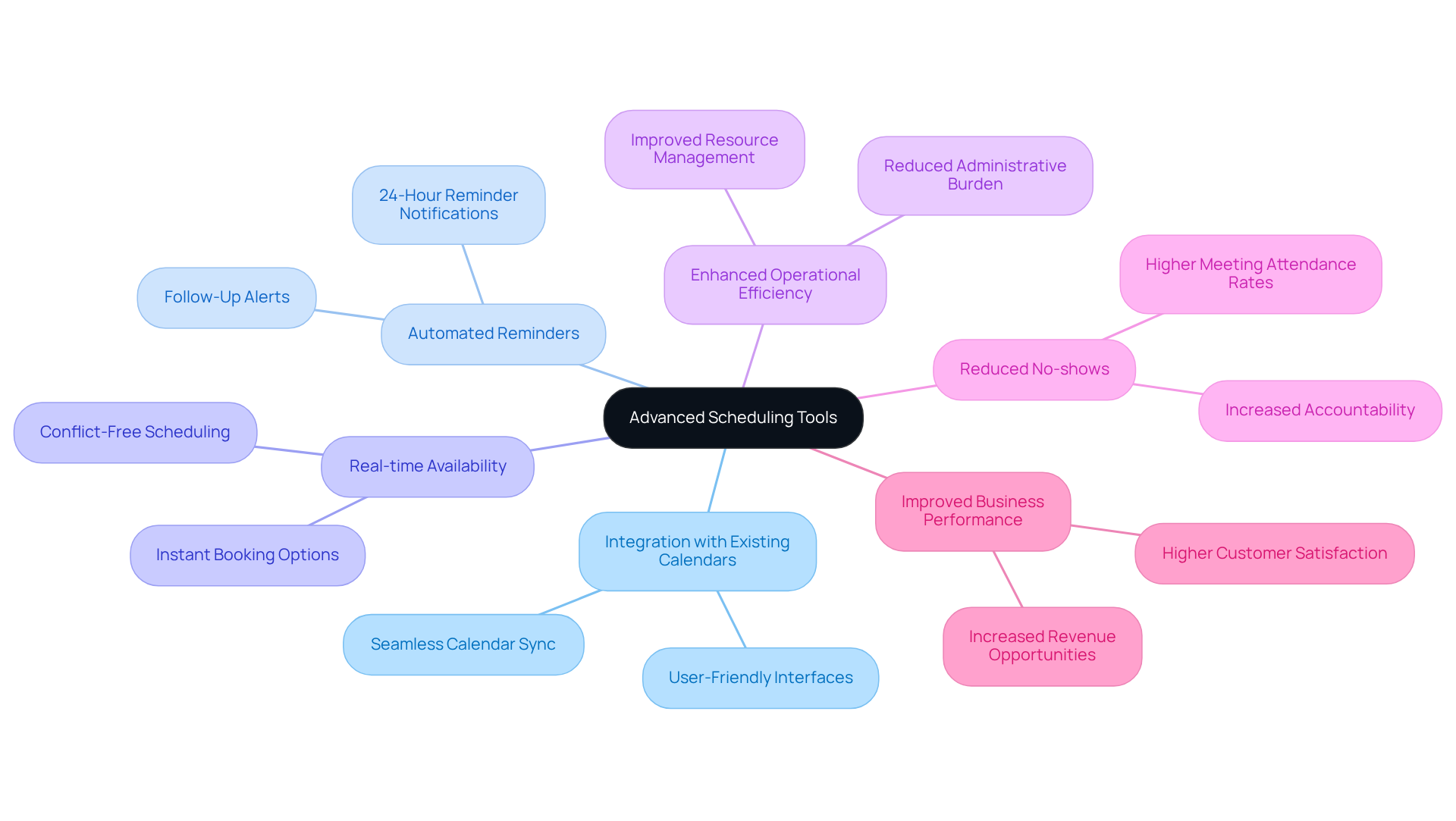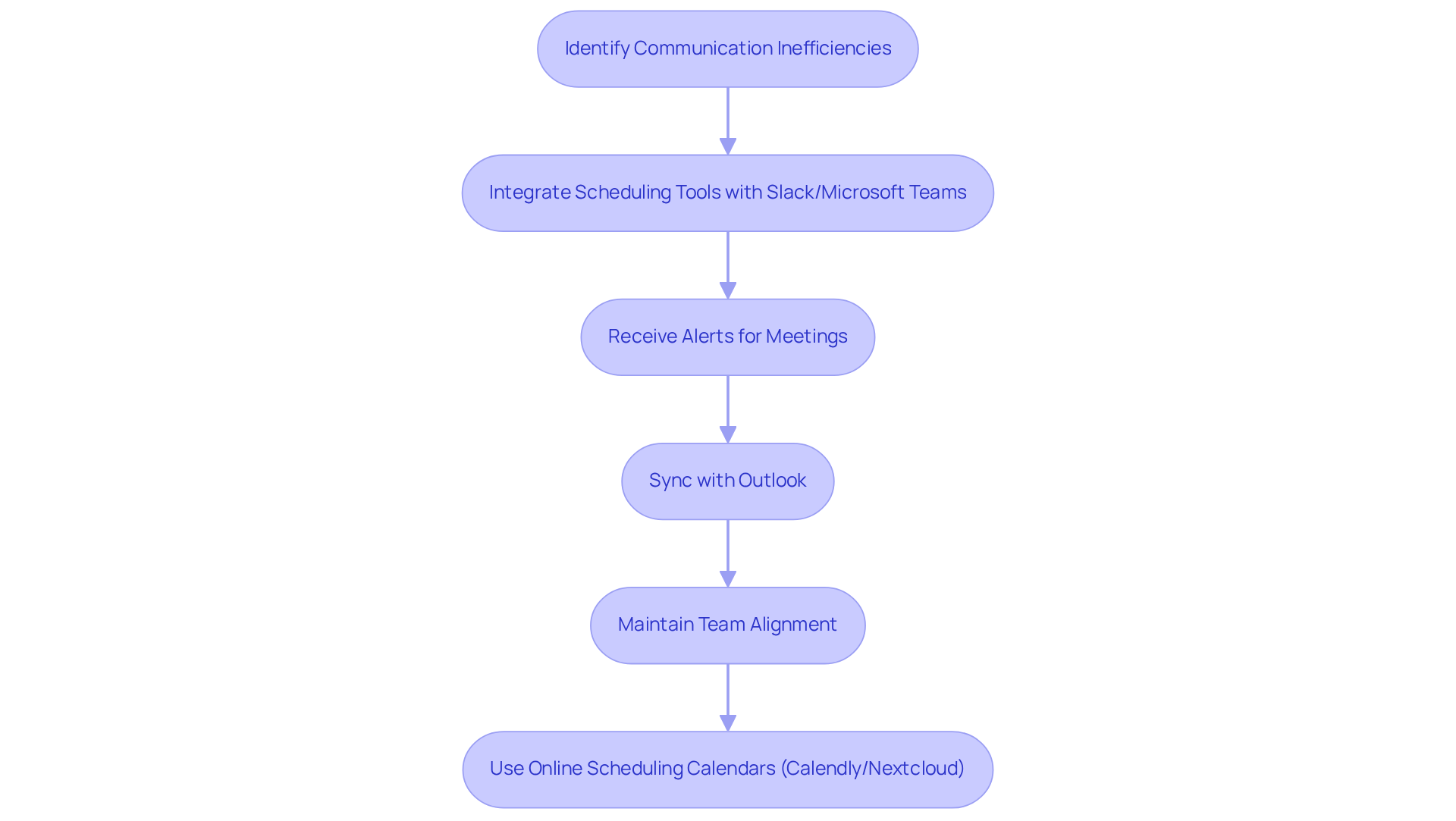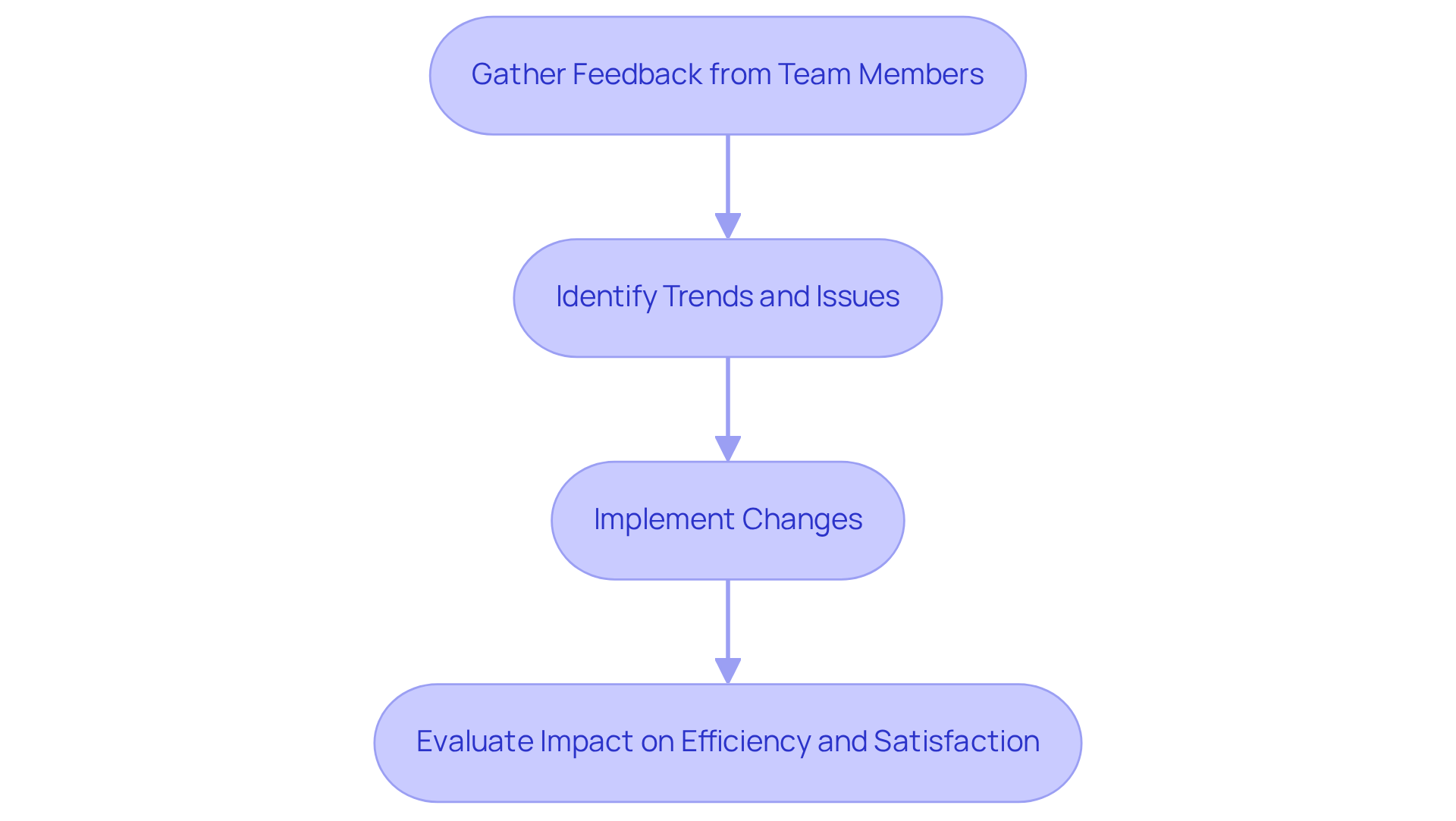4 Best Practices for Scheduling Calendars Online Effectively

Overview
In today’s fast-paced work environment, communication inefficiencies can significantly hinder productivity. To combat this, the article outlines four best practices for effectively scheduling calendars online. These practices include:
- Establishing clear objectives
- Leveraging advanced scheduling tools
- Integrating scheduling with team collaboration
- Monitoring scheduling practices for continuous improvement
Each of these strategies is not just a suggestion; they are backed by evidence demonstrating how they enhance productivity, reduce inefficiencies, and foster better communication within teams.
Establishing clear objectives is crucial. When teams know what they aim to achieve, meetings become more focused and productive. Leveraging advanced scheduling tools streamlines the process, allowing for quick adjustments and better time management. Integrating scheduling with team collaboration ensures that everyone is on the same page, reducing the chances of miscommunication. Finally, monitoring scheduling practices allows teams to identify areas for improvement, fostering a culture of continuous enhancement.
The benefits of these practices are clear: they lead to more effective meetings and improved operational efficiency. By implementing these strategies, organizations can transform their scheduling processes, ultimately driving better results. Explore these practices further to unlock the full potential of your team’s communication and operational capabilities.
Introduction
In an era where time is crucial, the ability to schedule meetings effectively can significantly impact productivity. The rise of remote work and digital collaboration has made mastering online calendar scheduling not just a convenience but a necessity for teams aiming for peak efficiency. This article explores four best practices that streamline the scheduling process while enhancing team alignment and engagement.
With a plethora of tools and strategies at their disposal, organizations must determine how to implement the most effective methods to avoid common pitfalls and maximize their meeting potential.
Establish Clear Scheduling Objectives
To create successful planning aims, start by clearly outlining the main purposes of your gatherings. Are they meant to inform, decide, or brainstorm? Clearly conveying these goals to all participants ensures alignment and focus. For instance, if the goal is decision-making, providing all necessary data in advance is crucial. This clarity not only prioritizes essential discussions but also minimizes unnecessary meetings, ultimately saving time and resources.
Incorporating SMART criteria—Specific, Measurable, Achievable, Relevant, and Time-bound—into your scheduling calendars online can significantly enhance the effectiveness of your gatherings. Studies reveal that 72% of professionals believe clear goals are essential for productive meetings. This organized approach guarantees that each gathering has a clear objective and expected outcomes, which can be effectively communicated to all stakeholders. By expressing goals at the outset, all participants understand their roles and contributions, further boosting engagement and productivity. Moreover, failing to set clear objectives can lead to unproductive meetings, which 71% of senior managers deem inefficient. By establishing clear objectives, you can reduce the frequency of unnecessary gatherings, ultimately enhancing overall productivity.

Leverage Advanced Scheduling Tools
In today’s fast-paced environment, communication inefficiencies can severely hinder operational effectiveness. Employing sophisticated planning tools like scheduling calendars online is essential for automating appointment arrangements and minimizing the back-and-forth communication that often complicates organization. These tools integrate seamlessly with existing calendars, providing users with the ability to manage scheduling calendars online and offering real-time visibility of availability. This enables them to select optimal appointment times without conflicts, streamlining the process of scheduling calendars online and significantly enhancing operational efficiency.
Moreover, integrating features such as automated reminders and follow-ups boosts accountability, ensuring that all participants are adequately prepared for discussions. For instance, a tool that sends reminders 24 hours before an appointment can drastically reduce no-shows and last-minute cancellations, leading to more productive sessions. Case studies reveal that organizations implementing such automated planning solutions experience marked improvements in gathering efficiency and overall business performance, underscoring the vital role of these tools in modern operations.

Integrate Scheduling with Team Collaboration
To tackle communication inefficiencies, integrating your scheduling tools with platforms like Slack or Microsoft Teams is essential. This integration allows team members to receive alerts about upcoming meetings directly within their communication channels, significantly reducing the chances of missed gatherings. For instance, Microsoft Teams syncs seamlessly with Outlook, ensuring that all calendar events are updated across both platforms. This synchronization is crucial for maintaining team alignment and operational efficiency.
Moreover, consider leveraging scheduling calendars online, like those offered by Calendly or Nextcloud, which allow colleagues to view each other’s availability. This level of transparency can expedite decision-making regarding meeting times and minimize scheduling conflicts. For example, if a team member sees that a colleague is busy, they can propose an alternative time without needing to ask directly, streamlining the process. Tools like Calendly aid in scheduling calendars online and help prevent double-booking by displaying only available time slots, further enhancing booking efficiency. By implementing these strategies, teams can significantly boost their workflow and overall productivity.

Monitor and Optimize Scheduling Practices
Assessing your planning practices is crucial for operational efficiency. Actively gathering input from team members about the effectiveness of meetings and the overall planning process can reveal significant trends. For instance, repeated timing conflicts or meetings that often exceed their scheduled duration can be identified. Notably, 82% of hourly employees have indicated that their work timetable impacts their job satisfaction, underscoring the importance of effective planning in talent retention.
Based on the feedback collected, implement necessary changes. If team members consistently express that weekly meetings are too frequent, consider transitioning to bi-weekly sessions. This iterative approach not only enhances planning efficiency but also cultivates a culture of continuous improvement within the organization. As Peter F. Drucker wisely noted, “Unless commitment is made, there are only promises and hopes; but no plans.” By prioritizing feedback, organizations can significantly elevate team performance and ensure that meetings fulfill their intended purpose.
Moreover, organizations like Shiftboard have reported a remarkable 21% reduction in overall labor costs after refining their practices for scheduling calendars online. This statistic illustrates the tangible benefits of optimizing planning processes. By addressing communication inefficiencies and embracing feedback, you can foster a more productive and satisfied workforce.

Conclusion
Establishing effective online scheduling practices is not just beneficial; it’s essential for overcoming communication inefficiencies that can hinder productivity. Organizations often struggle with poorly managed meetings that fail to serve their intended purposes. By clearly defining scheduling objectives and leveraging advanced tools, teams can streamline their processes and foster a more engaged workforce.
Key insights from this article underscore the importance of setting clear goals using the SMART criteria. Utilizing sophisticated scheduling tools automates processes, while integrating scheduling with communication platforms enhances collaboration. Actively seeking feedback to optimize practices not only reduces inefficiencies but also promotes accountability and strengthens overall team dynamics.
The significance of effective online scheduling cannot be overstated. Implementing these best practices creates a more productive environment, reduces unnecessary meetings, and boosts employee satisfaction. By embracing these strategies, organizations refine their scheduling processes and contribute to a culture of continuous improvement and collaboration, positioning teams for greater success in their endeavors. Explore how these solutions can transform your operational efficiency today.
Frequently Asked Questions
Why is it important to establish clear scheduling objectives for meetings?
Establishing clear scheduling objectives helps to outline the main purposes of gatherings, ensuring alignment and focus among participants. It minimizes unnecessary meetings and prioritizes essential discussions, ultimately saving time and resources.
What are the SMART criteria, and how do they relate to scheduling meetings?
The SMART criteria stand for Specific, Measurable, Achievable, Relevant, and Time-bound. Incorporating these criteria into scheduling calendars can enhance the effectiveness of meetings by ensuring that each gathering has a clear objective and expected outcomes.
What percentage of professionals believe that clear goals are essential for productive meetings?
According to studies, 72% of professionals believe that clear goals are essential for productive meetings.
What can happen if clear objectives are not set for meetings?
Failing to set clear objectives can lead to unproductive meetings, which 71% of senior managers consider inefficient. This can result in wasted time and resources.
How does clear communication of goals impact participant engagement?
Clearly expressing goals at the outset helps all participants understand their roles and contributions, which boosts engagement and productivity during meetings.
